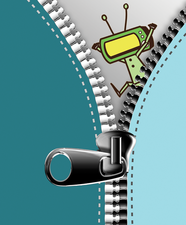PeaZip compression tool tested
Zipped and Checked

© Lead Image © Zoya Fedorova, 123RF.com
Compression tools are part of any user's regular toolkit. PeaZip not only supports exotic formats, it also contributes toward the security and integrity of your data through many additional functions.
Linux has countless programs for compressing and archiving data. The major desktop environments come with their own graphical applications for this purpose, but PeaZip – a free all-rounder – facilitates the handling of archives while also ensuring the integrity of the data.
PeaZip has been available for some time from the repositories of many major distributions – for example, Mageia and other Mandriva derivatives, as well as Fedora and CentOS. Thus, you can typically use the package manager for the installation. DEB packages for 32-bit and 64-bit systems are available from the project website [1]; the archives from the same source are only suitable for 32-bit systems.
A portable variant is also available in the form of a tarball, which is not restricted to a specific system. This archive does not contain the source code for the software but the complete program, which will run no matter what distribution you have. It makes sense to copy the folder into a directory of your choice after unpacking and then run the program there by typing the peazip command at the command line. You also have the option of integrating the software into a menu, which gives you the ability to start the program at the push of a button later on.
[...]
Buy this article as PDF
(incl. VAT)
Buy Linux Magazine
Subscribe to our Linux Newsletters
Find Linux and Open Source Jobs
Subscribe to our ADMIN Newsletters
Support Our Work
Linux Magazine content is made possible with support from readers like you. Please consider contributing when you’ve found an article to be beneficial.

News
-
Manjaro 26.0 Primary Desktop Environments Default to Wayland
If you want to stick with X.Org, you'll be limited to the desktop environments you can choose.
-
Mozilla Plans to AI-ify Firefox
With a new CEO in control, Mozilla is doubling down on a strategy of trust, all the while leaning into AI.
-
Gnome Says No to AI-Generated Extensions
If you're a developer wanting to create a new Gnome extension, you'd best set aside that AI code generator, because the extension team will have none of that.
-
Parrot OS Switches to KDE Plasma Desktop
Yet another distro is making the move to the KDE Plasma desktop.
-
TUXEDO Announces Gemini 17
TUXEDO Computers has released the fourth generation of its Gemini laptop with plenty of updates.
-
Two New Distros Adopt Enlightenment
MX Moksha and AV Linux 25 join ranks with Bodhi Linux and embrace the Enlightenment desktop.
-
Solus Linux 4.8 Removes Python 2
Solus Linux 4.8 has been released with the latest Linux kernel, updated desktops, and a key removal.
-
Zorin OS 18 Hits over a Million Downloads
If you doubt Linux isn't gaining popularity, you only have to look at Zorin OS's download numbers.
-
TUXEDO Computers Scraps Snapdragon X1E-Based Laptop
Due to issues with a Snapdragon CPU, TUXEDO Computers has cancelled its plans to release a laptop based on this elite hardware.
-
Debian Unleashes Debian Libre Live
Debian Libre Live keeps your machine free of proprietary software.

